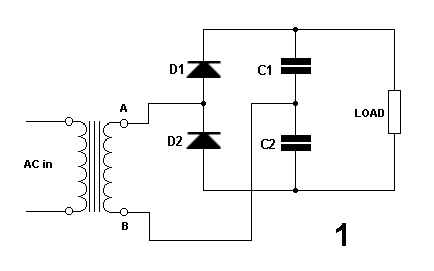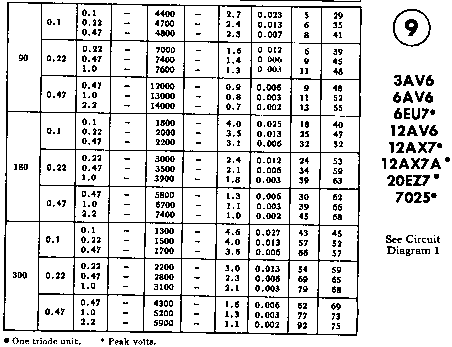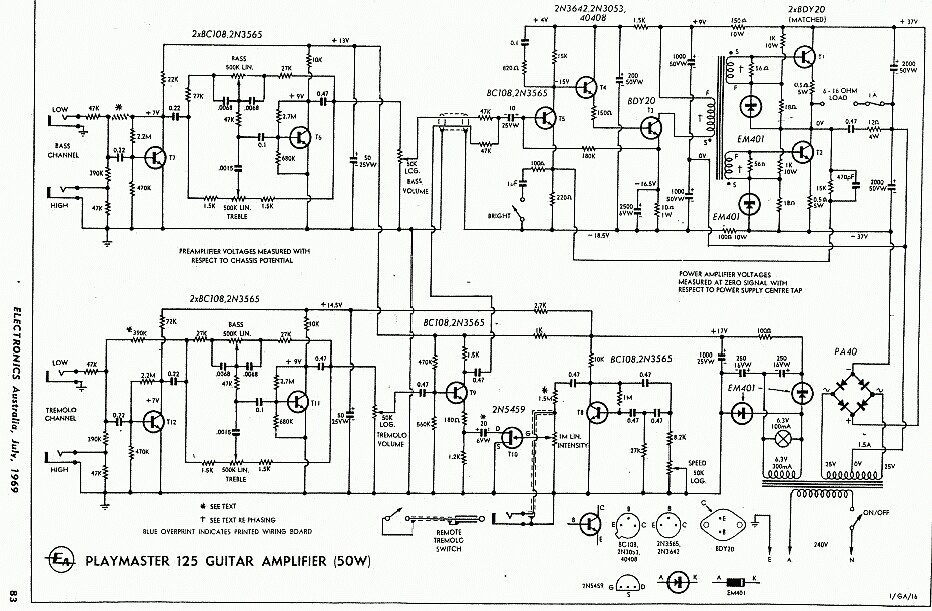{Now that's what I call a stack - dig all that cone area :lmao: }
JMF provides some excellent advice. :dbtu:
Assuming that the Alembic is running on a supply of around 250 volts you have a very classic preamp designed by Leo Fender (who had just the odd clue or two), a very well worn path for very good reason - it works well with guitar and has been a proven winner for over 50 years. You will note that this circuit comes via R.G.Keen's site, another gentleman with the odd clue. 8|
{mind you, in my opinion most of the classic sound of a valve guitar amp comes from a valve output stage driving an output transformer, but that's a whole other discussion}
How? A triode is not an op-amp with a huge hidden reserve of gain available for the tweeking of a resistor value. The first stage is already operating at or close to flat tack (see the "V.G.", Voltage Gain, column in the RCA table above) and you are already trying to thread your guitar signal through the eye of a headroom needle. Increasing the gain would only make things worse.
Why? Your question suggests that you have missed the point of the second part of my post above.
The characteristic "tonality" of a triode (or JFET) comes from using it in its linear range between cutoff and saturation. If you don't want the characteristic tonality or voicing of the valve and only want square waves then you can simply use a 50-cent op-amp and diode clipper and save yourself an awful lot of bother; the fact that it's a valve just becomes purely decorative.
A problem with the low supply voltage is that the linear operating window is seriously restricted and the gain stage prone to very easy, far too easy, overload (clipping). Using a higher supply means that the triodes have a larger linear operating range where you will get the classic characteristic preamp distortion - "clean" but harmonically rich.
What you are suggesting would result in wall-to-wall clipping under just about all playing conditions and makes the choice of the gain device quite immaterial.
Do you want an amp that has some character, a range of voicing, or do you just want a grunge engine?
Perhaps you should build what JMF rightly calls "a toy, just a classroom demo" so that you can experience what we are trying to explain.
JMF provides some excellent advice. :dbtu:
Assuming that the Alembic is running on a supply of around 250 volts you have a very classic preamp designed by Leo Fender (who had just the odd clue or two), a very well worn path for very good reason - it works well with guitar and has been a proven winner for over 50 years. You will note that this circuit comes via R.G.Keen's site, another gentleman with the odd clue. 8|
{mind you, in my opinion most of the classic sound of a valve guitar amp comes from a valve output stage driving an output transformer, but that's a whole other discussion}
Quote from: CraftyZAif I increase the gain on the left I can create a stronger distortion
How? A triode is not an op-amp with a huge hidden reserve of gain available for the tweeking of a resistor value. The first stage is already operating at or close to flat tack (see the "V.G.", Voltage Gain, column in the RCA table above) and you are already trying to thread your guitar signal through the eye of a headroom needle. Increasing the gain would only make things worse.
Why? Your question suggests that you have missed the point of the second part of my post above.
The characteristic "tonality" of a triode (or JFET) comes from using it in its linear range between cutoff and saturation. If you don't want the characteristic tonality or voicing of the valve and only want square waves then you can simply use a 50-cent op-amp and diode clipper and save yourself an awful lot of bother; the fact that it's a valve just becomes purely decorative.
A problem with the low supply voltage is that the linear operating window is seriously restricted and the gain stage prone to very easy, far too easy, overload (clipping). Using a higher supply means that the triodes have a larger linear operating range where you will get the classic characteristic preamp distortion - "clean" but harmonically rich.
What you are suggesting would result in wall-to-wall clipping under just about all playing conditions and makes the choice of the gain device quite immaterial.
Do you want an amp that has some character, a range of voicing, or do you just want a grunge engine?
Perhaps you should build what JMF rightly calls "a toy, just a classroom demo" so that you can experience what we are trying to explain.











 }
}

 The "designer" seems so oblivious to the fact that this is total rubbish that they are willing to post it on the net.
The "designer" seems so oblivious to the fact that this is total rubbish that they are willing to post it on the net.